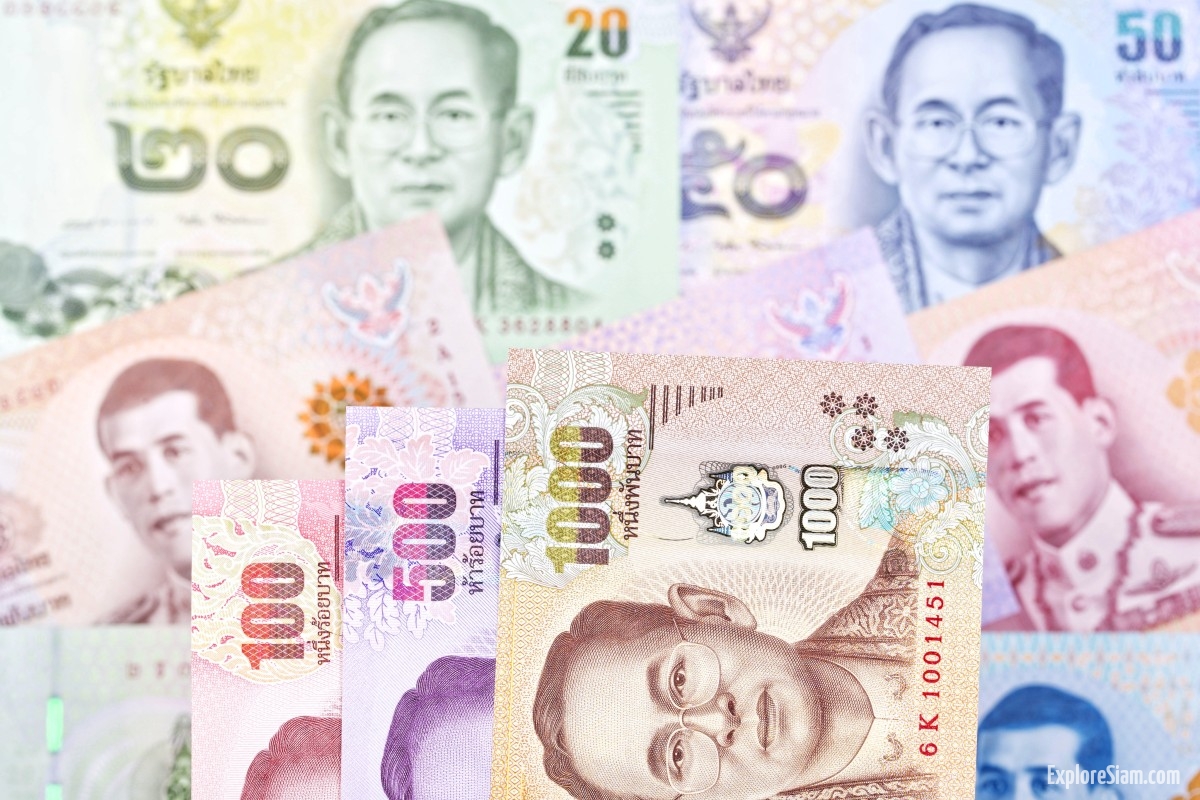The Thai Baht, symbolized as THB and often denoted by the symbol ฿, is the official currency of Thailand. The Baht has a long and storied history, reflecting the rich cultural and economic tapestry of Thailand. It plays a crucial role in the country’s economy, influencing everything from daily transactions to international trade.
Historical Background
The Baht’s origins can be traced back to ancient times when it was initially known as the “Tical.” The term “Baht” has been used in Thailand since the late 19th century, but the currency underwent significant changes during the reign of King Chulalongkorn (Rama V). In 1897, King Chulalongkorn established the modern currency system, aligning the Baht with the gold standard and setting it at 15 grams of gold per Baht. This move was part of broader reforms aimed at modernizing Thailand and integrating it into the global economy.
Design and Denominations
The Thai Baht is issued by the Bank of Thailand, the country’s central bank. The currency comes in both coin and banknote forms. Coins are available in denominations of 1, 2, 5, and 10 Baht, as well as smaller units known as Satang, with 100 Satang equaling 1 Baht. Banknotes are issued in denominations of 20, 50, 100, 500, and 1,000 Baht.
Each banknote features a portrait of the current monarch, King Maha Vajiralongkorn (Rama X), and includes intricate designs that highlight significant cultural and historical themes. The banknotes are not only a medium of exchange but also serve as a showcase of Thai heritage, depicting important landmarks, historical figures, and events.
Economic Significance
The Baht is pivotal to Thailand’s economy, which is one of the largest in Southeast Asia. The currency’s value is influenced by various factors, including Thailand’s economic policies, inflation rates, interest rates, and foreign exchange reserves. The Bank of Thailand closely monitors and manages the currency to maintain economic stability.
Thailand’s economy is diverse, with significant contributions from tourism, agriculture, manufacturing, and services. The Baht’s stability and strength are critical for the tourism industry, which attracts millions of visitors annually. A stable Baht ensures that tourists feel confident in spending money, thereby boosting local businesses and the overall economy.
International Role
The Thai Baht is not only essential within Thailand but also plays a role in international trade and finance. Thailand is a major exporter of goods such as electronics, automobiles, textiles, and agricultural products. The Baht’s exchange rate affects the competitiveness of Thai exports on the global market. A weaker Baht makes Thai goods cheaper and more attractive to foreign buyers, while a stronger Baht can have the opposite effect.
Thailand’s trade partners, including countries in Asia, Europe, and North America, engage in transactions involving the Baht. This necessitates a robust foreign exchange market where the Baht is traded against other major currencies like the US Dollar, Euro, and Japanese Yen.
Challenges and Future Outlook
Like all currencies, the Thai Baht faces challenges that can impact its value and stability. Political instability, economic fluctuations, and global financial crises can lead to volatility in the Baht’s exchange rate. The Bank of Thailand employs various monetary policy tools to mitigate these risks and ensure the currency’s stability.
In recent years, the global economic landscape has been affected by events such as the COVID-19 pandemic, which posed significant challenges for the Thai economy and the Baht. The pandemic led to a sharp decline in tourism and disruptions in global supply chains, affecting Thailand’s trade and economic growth. However, the Thai government and the Bank of Thailand implemented measures to support the economy, including stimulus packages, interest rate cuts, and financial assistance programs.
Looking ahead, the future of the Thai Baht will be shaped by how effectively Thailand navigates these challenges and capitalizes on opportunities for growth. Continued economic reforms, investments in infrastructure, and efforts to enhance the country’s competitiveness will be crucial. Moreover, Thailand’s strategic location in Southeast Asia and its participation in regional economic initiatives, such as the ASEAN Economic Community, will influence the Baht’s role in the regional and global economy.
The Thai Baht is more than just a currency; it is a symbol of Thailand’s economic resilience and cultural heritage. From its historical roots to its current status as a key player in international finance, the Baht reflects the dynamic and evolving nature of Thailand. As the country continues to develop and integrate into the global economy, the Baht will remain a vital component of Thailand’s economic identity and prosperity.





